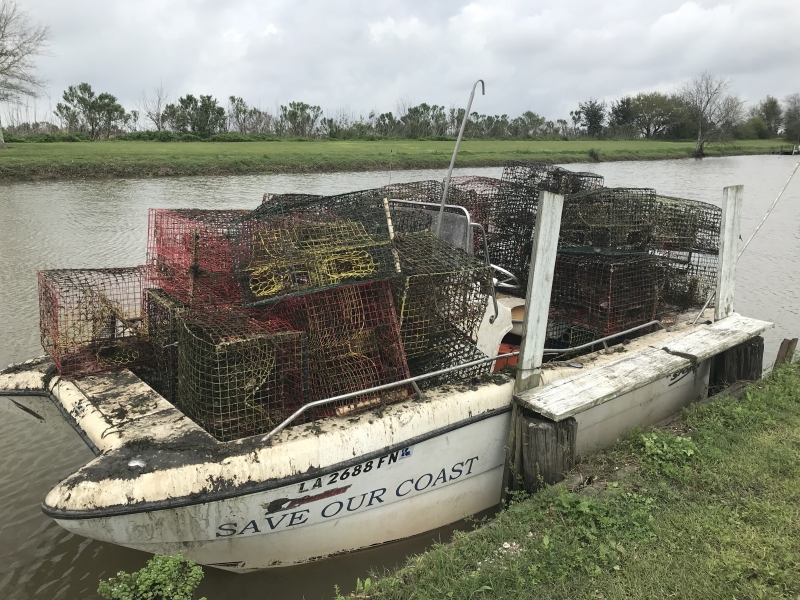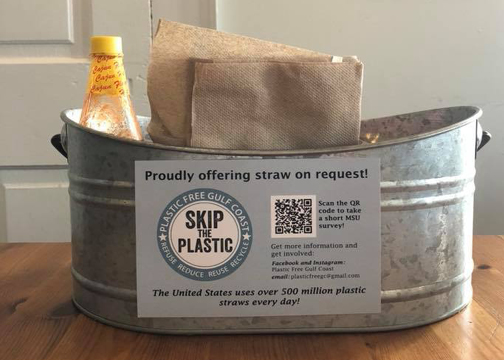The Gulf of Mexico (GOM) is the ninth largest body of water in the world but is nearly landlocked by North America, bordered by Mexico and the U.S. states of Texas, Louisiana, Mississippi, Alabama, and Florida. The Gulf of Mexico and the watersheds that drain into it are highly biodiverse and feature many unique habitats and animals. From large hurricane debris to tiny microplastics, marine debris is present through the GOM watershed and requires a comprehensive approach to prevent it, research it, and reduce its impacts.
Despite this big challenge, the NOAA Marine Debris Program’s partners in the region are up to the task.
Where the Fish and Magnolia Rivers meet the sea and create the estuary of Weeks Bay, sunken boats used to dot the estuary’s shoreline. The Weeks Bay Foundation and Weeks Bay National Estuarine Research Reserve, supported by a NOAA Marine Debris Community-based Removal grant, removed those vessels this past year through the “Derelict is Dangerous” campaign. This project helps to protect the surrounding ecosystem and the people who work and play on the water. View a short video of the removal process in action at the end of the blog.
Also along the Gulf Coast, the Pearl River connects to the Gulf of Mexico on the border of Mississippi and Louisiana. A huge log jam full of woody debris and a variety of human-made trash, including parts of houses, boats, coolers, bags, and even large appliances, used to keep the water from flowing freely. The Southeast Aquatic Resources Partnership (SARP), Southeastern Association of Fish and Wildlife Agencies (SEAFWA), and Pearl Riverkeeper, with support from U.S. Fish and Wildlife Service, and a NOAA Marine Debris Community-based Removal grant, facilitated the removal of over 18,000 pounds of debris as part of an effort to allow the river to once again flow freely into the Gulf.
In Louisiana, the Lake Pontchartrain Basin Foundation, supported by a NOAA Marine Debris Program Removal grant, in partnership with the Louisiana Department of Wildlife and Fisheries, the Louisiana Master Naturalists Association, Common Ground Relief, Virginia Institute of Marine Science, local universities, and volunteers, will remove thousands of derelict crab traps from the Lake Pontchartrain Basin over the next two years. Using the estimate that about 25 crabs are killed per derelict trap each year, this effort could prevent approximately 300,000 to 450,000 blue crabs from being caught in the next three year! Those who would like to become a volunteer to remove traps during the blue crab closure can contact the Lake Pontchartrain Basin Foundation directly. To learn more about this new removal project, stay tuned for the next blog posted this week.

Citizens of the Gulf Coast recognize that debris doesn’t only come from upriver. With the support of a NOAA Marine Debris Prevention grant, the Plastic Free Gulf Coast program is pulling together partners from the Panhandle of Florida across to Texas to help coastal restaurants move away from single-use plastics. They are hoping to create a regional green economy that supports consumers and businesses, and works together to make a difference when it comes to marine debris in the Gulf of Mexico.

The Marine Debris Program is proud of our Gulf of Mexico partners and the amazing work they have done, and will continue to do, to protect their unique waterways from marine debris.

Insanity!!!!! How could anyone do this to our planet?